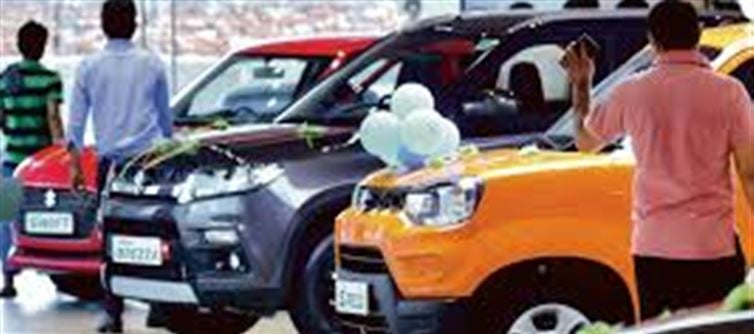
In a major decision welcomed by the automobile industry, the GST Council has revised the tax slabs for cars in India. The move is expected to make small cars more affordable, boost personal mobility, and simplify the overall tax regime for buyers. Let’s break down what this means for car owners and new buyers.
GST Council’s Big Decision
At its 56th meeting, the GST Council reduced taxes on small cars, while streamlining larger cars and SUVs under a single high tax slab. Key highlights:
- Small cars: GST cut from 28% → 18%
- Larger cars & SUVs: Now under 40% GST (no additional cess)
- Electric cars: Continue at a 5% GST rate
- Auto components: Fixed at 18% GST, regardless of car type
This structure is designed to boost sales while keeping luxury and high-performance vehicles under stricter taxation.
What Qualifies as a Small Car?
To ensure clarity, the GST Council defined small cars as:
- Length under 4 meters
- Petrol/CNG/LPG engines below 1,200 cc
- Diesel engines below 1,500 cc
Anything larger or more powerful now attracts the 40% GST slab.
EVs Remain the Winners
Electric cars remain the biggest beneficiaries with just 5% GST. Models like the Tata Nexon EV, mahindra XUV400, hyundai Ioniq 5, and MG ZS EV continue to enjoy the lowest tax rate, encouraging adoption of clean mobility.
Maruti Suzuki: From Alto to Grand Vitara
- 5% GST: eVitara (electric)
- 18% GST: Alto K10, Swift, WagonR, Baleno, Dzire, Fronx, Ignis, Eeco
- 40% GST: Brezza, Ertiga, Grand Vitara, XL6, Jimny, Invicto
This ensures Maruti’s budget cars get cheaper, while premium SUVs stay in the high bracket.
Mahindra: Thar & Scorpio Stay Premium
- 5% GST: XUV400, BE6, XEV9E
- 18% GST: XUV3XO
- 40% GST: Bolero, Scorpio N, Scorpio Classic, XUV700, Thar, Thar Roxx
Mahindra’s SUVs remain under the luxury tax bracket, keeping their rugged appeal intact but at a higher cost.
Hyundai: From Grand i10 to Tucson
- 5% GST: Creta EV, Ioniq 5
- 18% GST: Grand i10, i20, Exter, Venue, Aura
- 40% GST: Creta, Verna, Tucson, Alcaraz
Popular compact cars like the i20 and Venue get the mid-range benefit, while bigger models stay premium.
Tata Motors: EVs Lead the Way
- 5% GST: Nexon EV, Tiago EV, Punch EV, Tigor EV, Curvv EV, Harrier EV
- 18% GST: Tiago, Tigor, Altroz, Nexon, Punch
- 40% GST: Harrier, Safari, Curvv (ICE)
Tata’s EV lineup dominates the affordable tax bracket, furthering its lead in India’s electric mobility race.
Kia, toyota & Others
- Kia: EVs like EV6 & EV9 at 5%, Sonet & Syros at 18%, Seltos & Carnival at 40%.
- Toyota: Glanza & Taisor at 18%, Innova, HyCross & Fortuner at 40%.
- MG Motors: Comet & ZS EV at 5%, Hector & Gloster at 40%.
- Honda: Amaze at 18%, City, Elevate & City Hybrid at 40%.
- Skoda/VW: Kylaq at 18%, Slavia, Kodiaq, Taigun & Tiguan at 40%.
The Catch: Larger Engines Costlier
While the reforms simplify taxes, buyers of 1500 cc+ engines and SUVs face the 40% GST hit. This is challenging for hilly states where powerful engines are practical. Similarly, two-wheelers above 350 cc also fall under higher taxation.
Final Word: A Boost for Small Cars & EVs
The new GST regime is a clear win for small cars and EVs, making them more affordable and attractive. However, SUV lovers and performance car buyers will need to brace for higher costs. The move signals the government’s intent to push affordable mobility and green transportation, while keeping luxury taxed at a premium.
Disclaimer:
The views and opinions expressed in this article are those of the author and do not necessarily reflect the official policy or position of any agency, organization, employer, or company. All information provided is for general informational purposes only. While every effort has been made to ensure accuracy, we make no representations or warranties of any kind, express or implied, about the completeness, reliability, or suitability of the information contained herein. Readers are advised to verify facts and seek professional advice where necessary. Any reliance placed on such information is strictly at the reader’s own risk.
.jpg)




 click and follow Indiaherald WhatsApp channel
click and follow Indiaherald WhatsApp channel